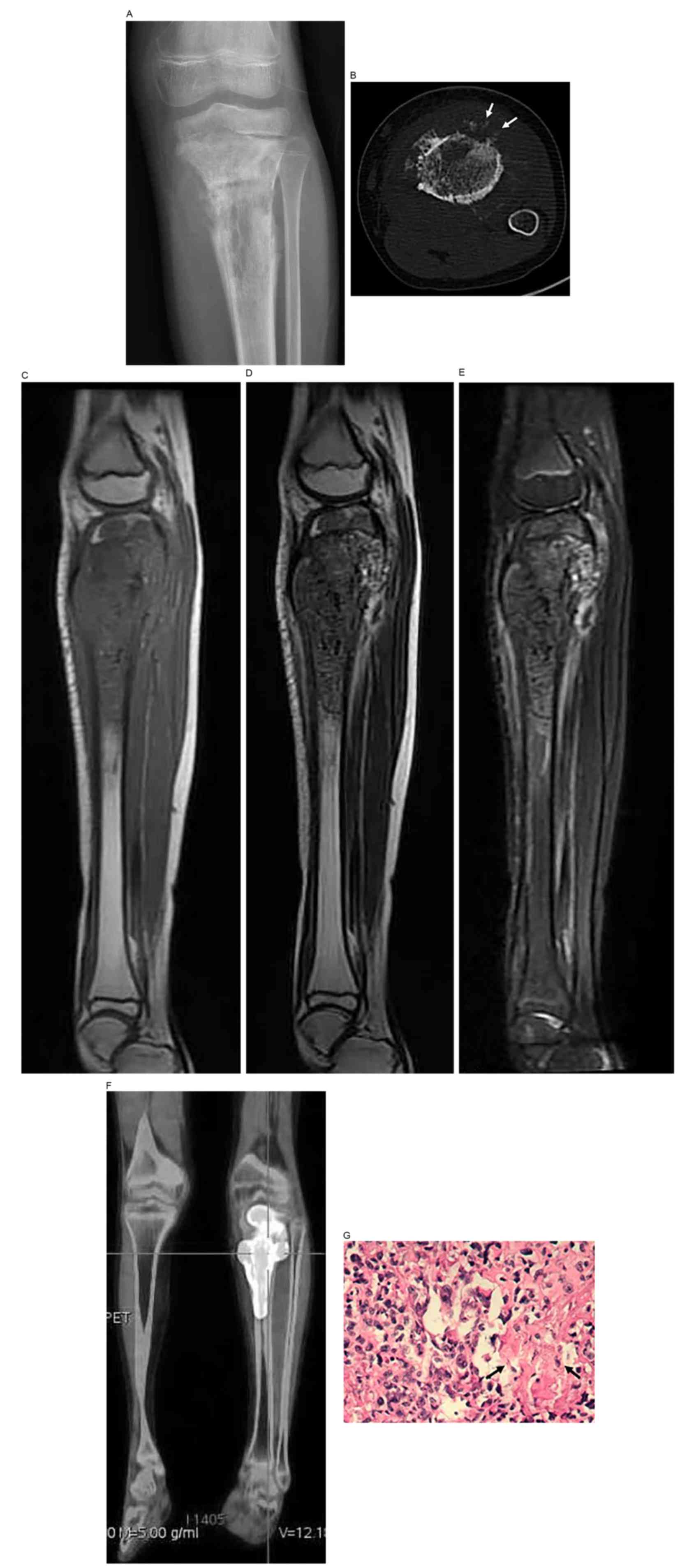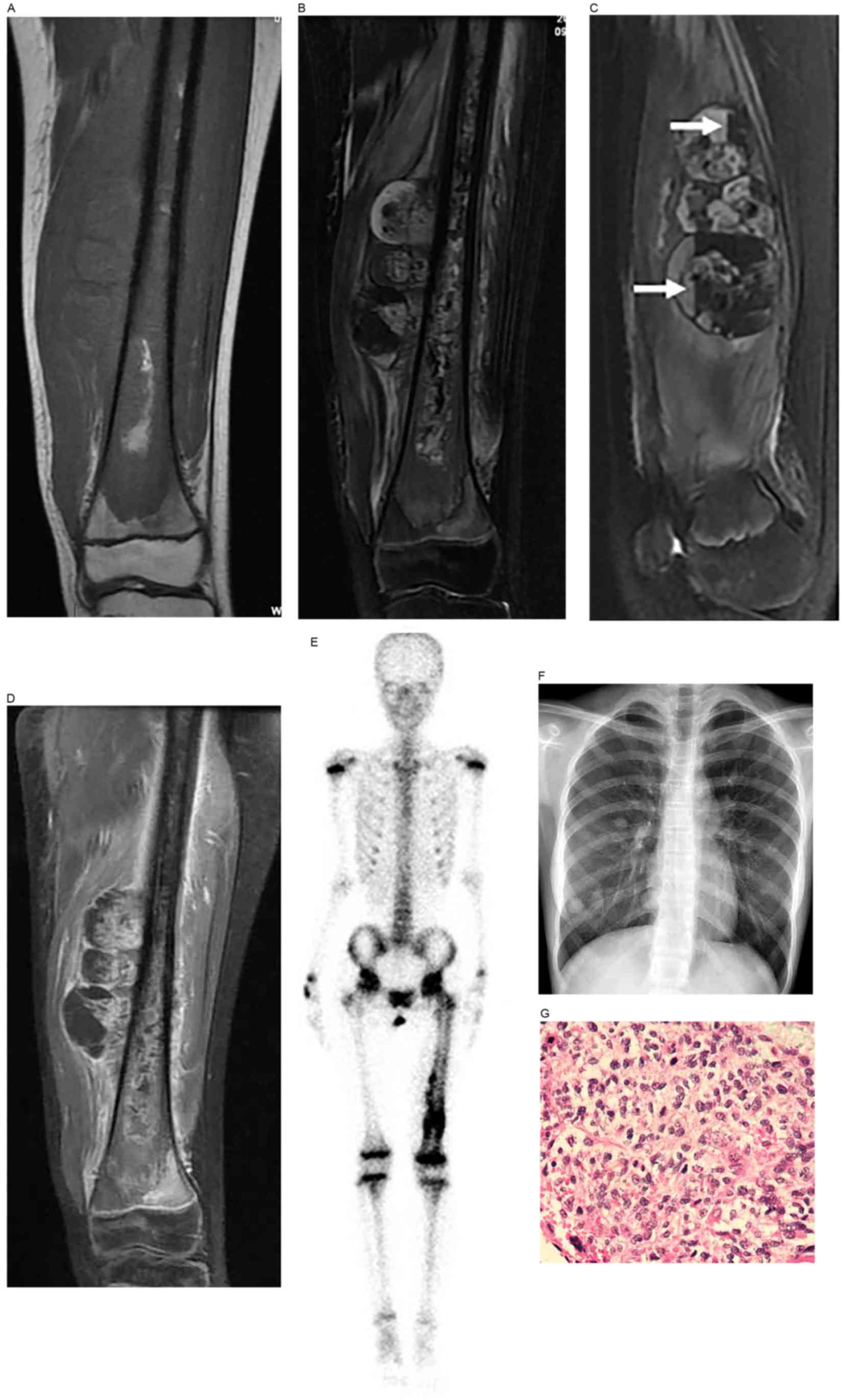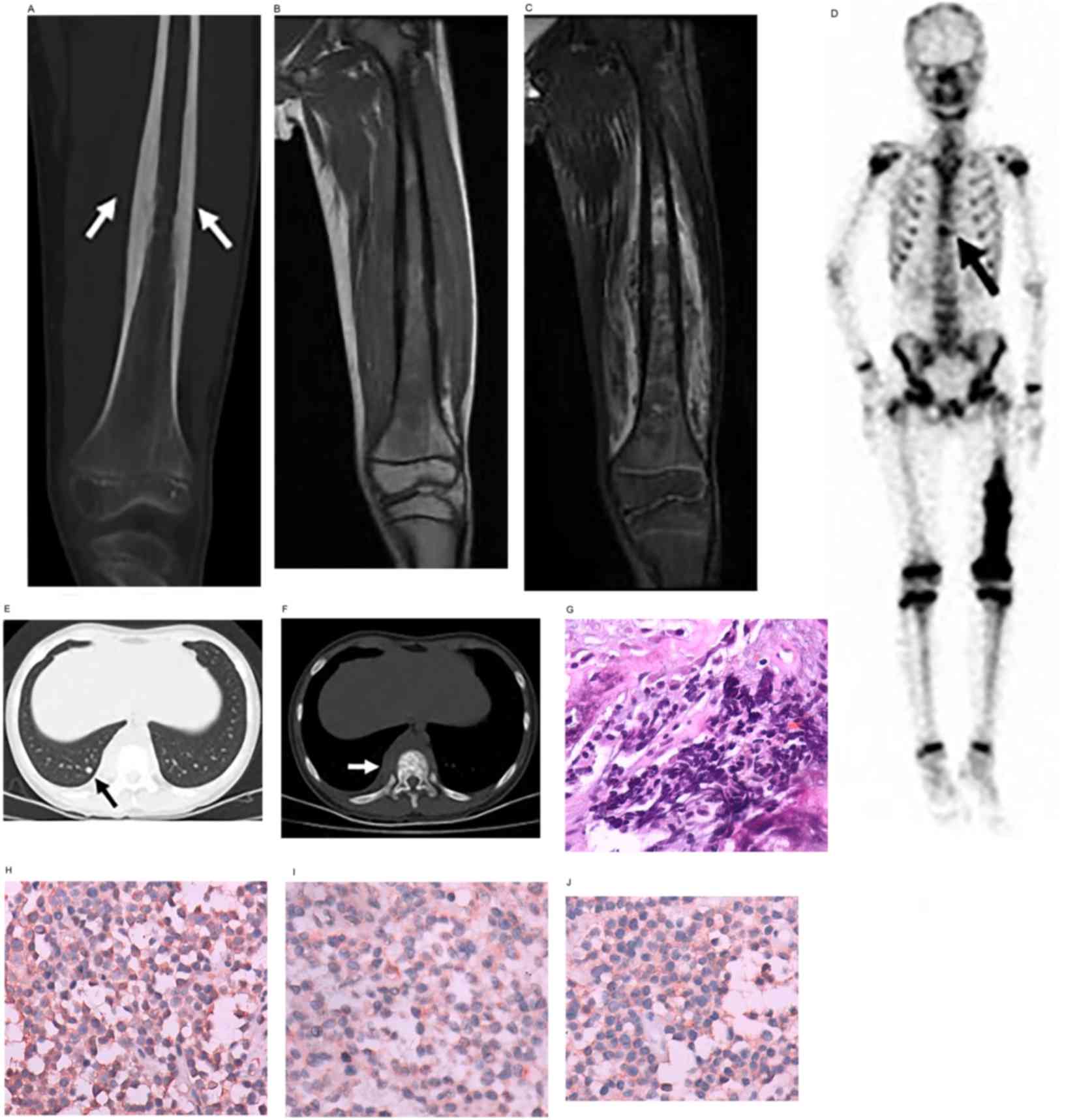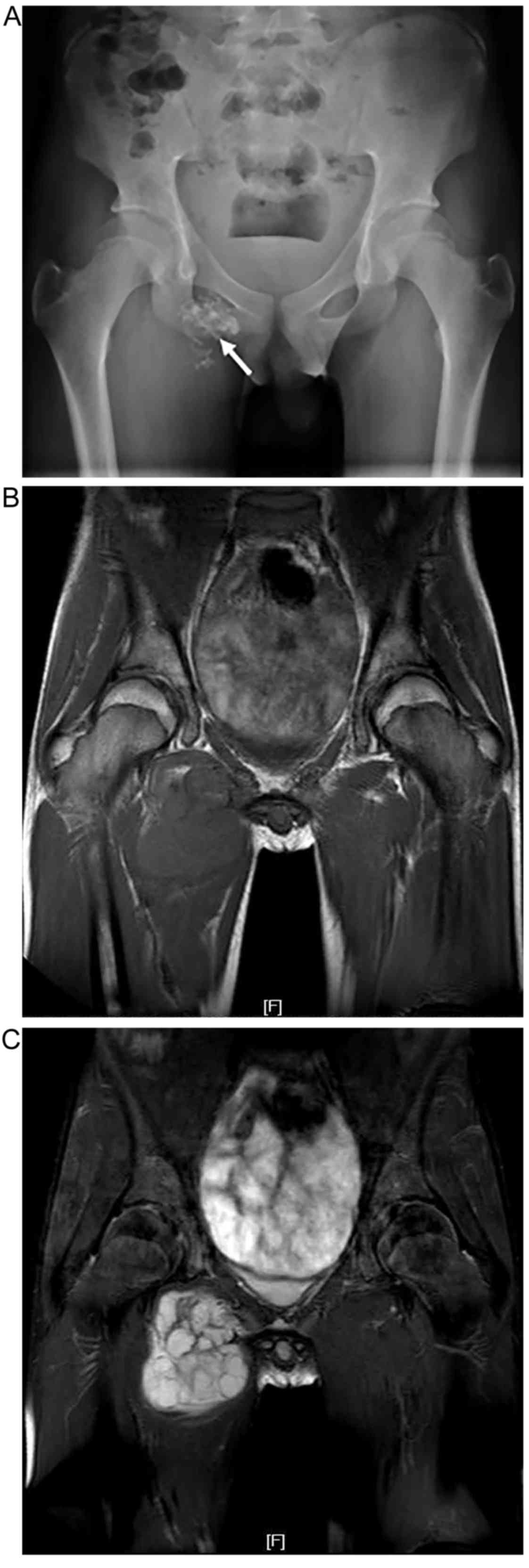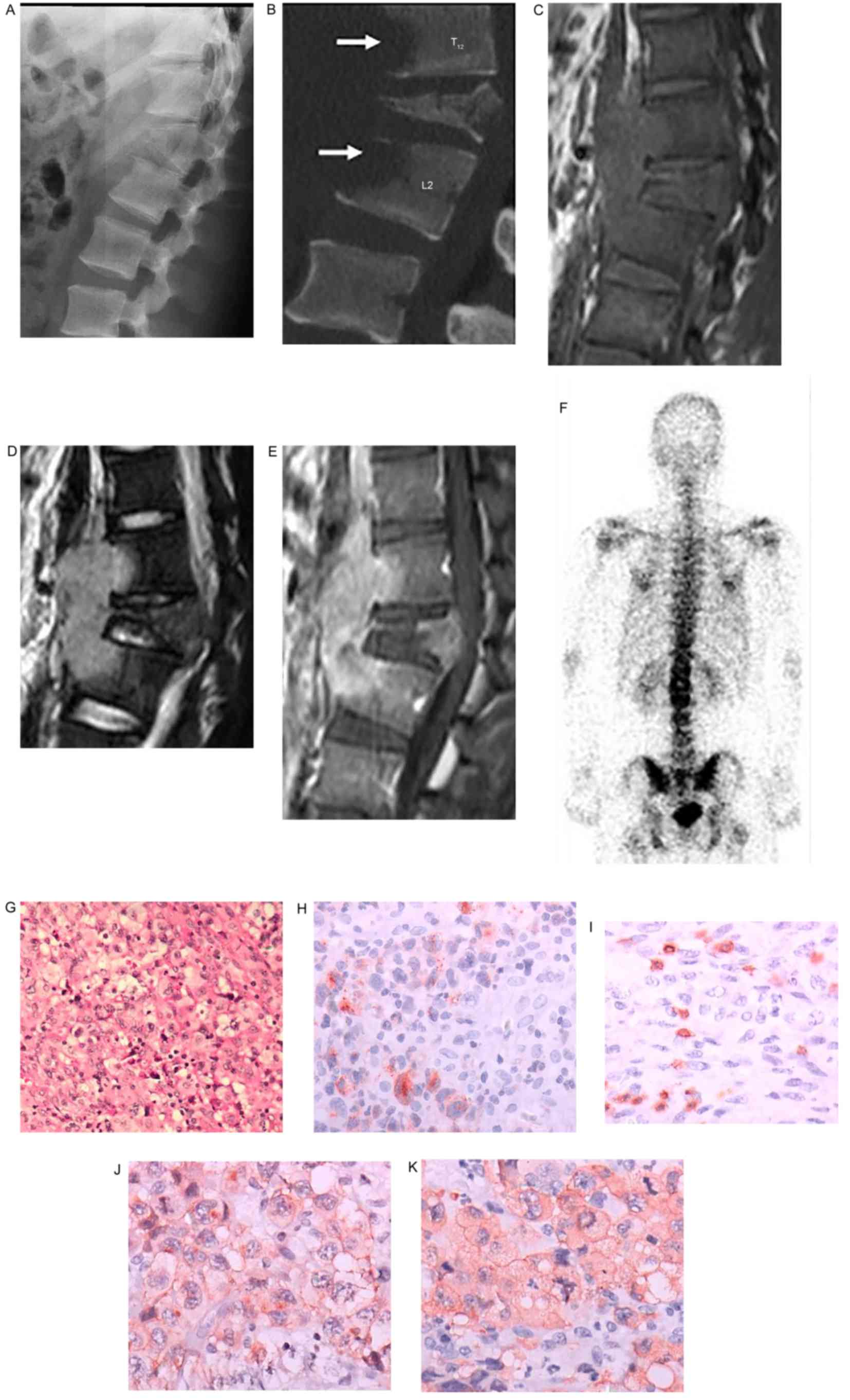Analysis of imaging characteristics of primary malignant bone tumors in children
- Authors:
- Published online on: September 14, 2017 https://doi.org/10.3892/ol.2017.6939
- Pages: 5801-5810
-
Copyright: © Sun et al. This is an open access article distributed under the terms of Creative Commons Attribution License.
Metrics:
Total
Views: 0 (Spandidos Publications: | PMC Statistics:
)
Total PDF Downloads: 0 (Spandidos Publications: | PMC Statistics:
)
Abstract
The present study aimed to investigate the imaging characteristics of primary malignant bone tumors in children. The imaging results of 34 children with primary malignant bone tumors confirmed by histopathological diagnosis between March 2008 and January 2014 were retrospectively analyzed. In total, 25 patients had osteosarcoma, with radiography and computed tomography (CT) showing osteolytic bone destruction or/and osteoblastic bone sclerosis, an aggressive periosteal reaction, a soft‑tissue mass and cancerous bone. The tumors appeared as mixed magnetic resonance imaging (MRI) signals that were inhomogeneously enhanced. A total of 5 patients presented with Ewing sarcoma, with radiography and CT showing invasive bone destruction and a soft‑tissue mass. Of the 5 cases, 2 showed a laminar periosteal reaction. The tumors were shown to have mixed low signal on T1‑weighted images (T1WI) and high signal on T2‑weighted images (T2WI); 1 case showed marked inhomogeneous enhancement. Another 3 patients exhibited chondrosarcoma. Of these cases, 1 was adjacent to the cortex of the proximal tibia, and presented with local cortical bone destruction and a soft‑tissue mass containing scattered punctate and amorphous calcifications. MRI revealed mixed low T1 signal and high T2 signals. Another case was located in the medullary cavity of the distal femur, with radiography revealing a localized periosteal reaction. The tumor appeared with mixed MRI signals, and with involvement of the epiphysis and epiphyseal plates. Radiography and CT of the third case showed bone destruction in the right pubic ramus, with patchy punctate, cambered calcifications in the soft‑tissue mass. MRI of the soft‑tissue mass revealed isointensity on T1WI and heterogeneous hyperintensity on T2WI. Ossifications and the septum appeared as low T1WI and T2WI. Of the 34 patients, 1 patient presented with lymphoma involving the T12, L1 and L2 vertebrae. CT showed vertebral bone destruction, a soft‑tissue mass and a compression fracture of L1. MRI showed a soft‑tissue mass with low T1 signal and high T2 signal and marked inhomogeneous enhancement. Overall, osteosarcoma was the most common primary malignant bone tumor, followed by Ewing sarcoma, chondrosarcoma and lymphoma. Osteoblastic or osteolytic bone destruction, an invasive periosteal reaction, soft‑tissue masses, a tumor matrix and inhomogeneous enhancement were important imaging features of malignant bone tumors.



